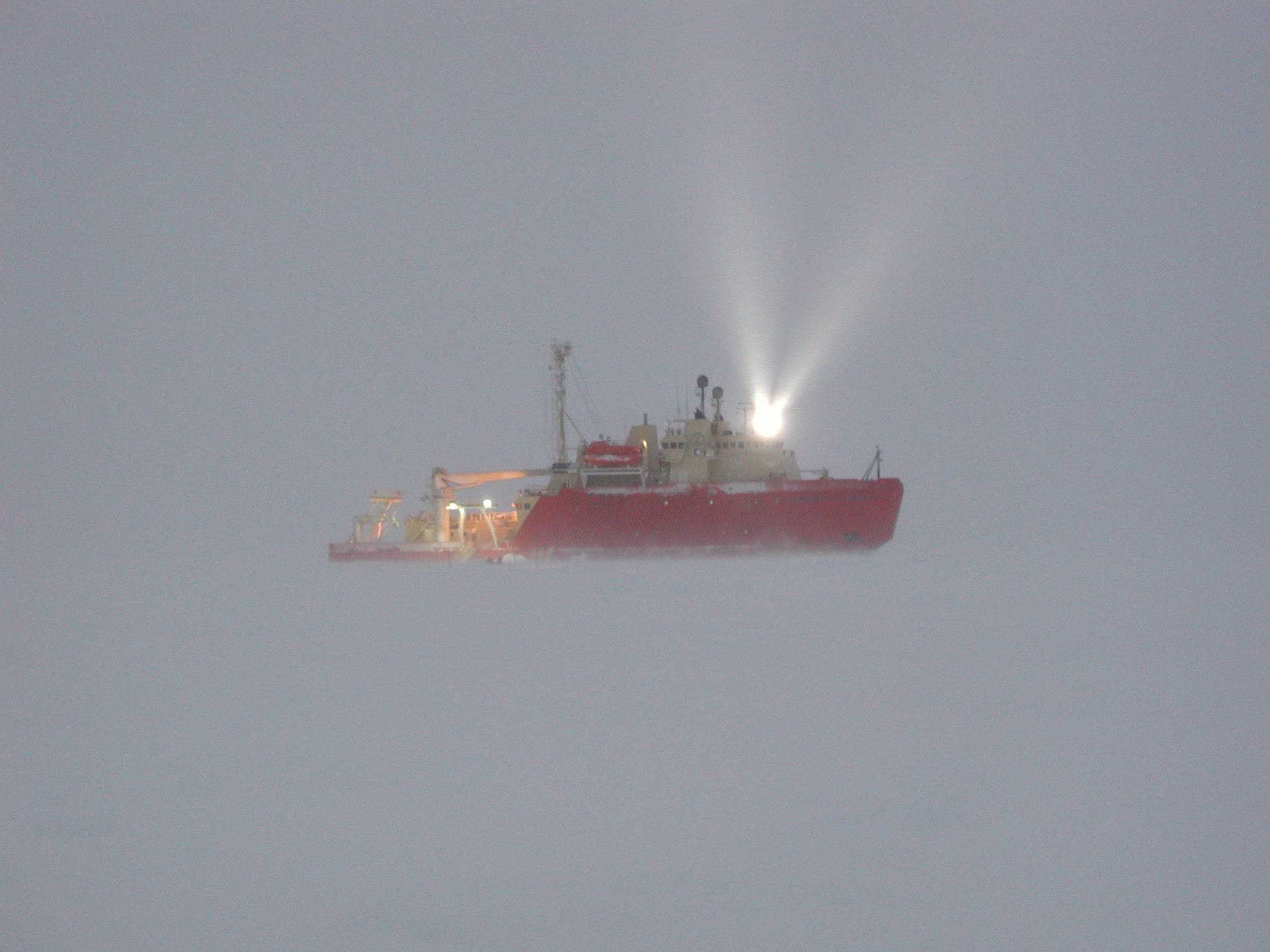Healthy oceans need healthy soundscapes

Commercial vessels create man-made noise pollution. Photo by Daniel Costa.
Rain falls lightly on the ocean's surface. Marine mammals chirp and squeal as they swim along. The pounding of surf along a distant shoreline heaves and thumps with metronomic regularity. These are the sounds that most of us associate with the marine environment. But the soundtrack of the healthy ocean no longer reflects the acoustic environment of today's ocean, plagued with human-created noise.
A global team of researchers set out to understand how man-made noise affects wildlife, from invertebrates to whales, in the oceans, and found overwhelming evidence that marine fauna, and their ecosystems, are negatively impacted by noise, disrupting their behavior, physiology, reproduction and, in extreme cases, causing mortality. They call for human-induced noise to be considered a prevalent stressor at the global scale and for policy to be developed to mitigate its effects.
The research, led by Professor Carlos M. Duarte, distinguished professor at King Abdullah University of Science and Technology (KAUST), and published in the journal Science, is eye opening as to the global prevalence and intensity of the impacts of ocean noise. Since the Industrial Revolution, humans have made the planet, the oceans in particular, noisier through fishing, shipping, infrastructure development and more, while also silencing the sounds from marine animals that dominated the pristine ocean.

A humpback whale surfaces. Photo courtesy of the Wegner Institute.
The Anthropocene marine environment, according to the researchers, is polluted by man-made acoustic phenomena, and should therefore be restored along sonic dimensions, as well as along more traditional chemical and climatic ones. Yet, current frameworks to improve ocean health ignore the need to mitigate noise as a pre-requisite for a healthy ocean.
In the media
- The Guardian - Cacophony of human noise is hurting all marine life, scientists warn
- The Daily Mail - Noise pollution is harming sea life, needs to be prioritized, scientists say
- Time Magazine - Underwater Noise Pollution Is Disrupting Ocean Life—But We Can Fix It
- Reuters - Noise pollution is harming sea life, needs to be prioritized, scientists say
- Yahoo News - Underwater Noise Pollution is Disrupting Ocean Life—But We Can Fix It
- VOA - Noise pollution threatens sea life, scientists say
- Gulf News - In the oceans the volume is rising as never before
Sound travels far, and quickly, underwater. And marine animals are sensitive to sound, which they use as a prominent sensorial signal guiding all aspects of their behavior and ecology. "This makes the ocean soundscape one of the most important, and perhaps under-appreciated, aspects of the marine environment," the study states. Their hope is that the evidence presented in the paper will "prompt management actions...to reduce noise levels in the ocean, thereby allowing marine animals to re-establish their use of ocean sound."
The team set out to document the impact of noise on marine animals and on marine ecosystems around the world. They assessed the evidence contained across more than 10,000 papers to consolidate compelling evidence that man-made noise impacts marine life from invertebrates to whales across multiple levels, from behavior to physiology.

Jana Winderen hydrophone recording Bearded Seals, Barents Sea, R/V Helmer Hanssen , ARCEx cruise in May 2016
"The deep, dark ocean is conceived as a distant, remote ecosystem, even by marine scientists," Duarte said, "however, as I was listening, years ago, to a hydrophone recording acquired off the U.S. West Coast, I was surprised to hear the clear sound of rain falling on the surface as the dominant sound in the deep-sea ocean environment. I then realized how acoustically-connected the ocean surface, where most human noise is generated, is to the deep sea; just 1,000 m, less than 1 second apart!"
The takeaway of the review is that "mitigating the impacts of noise from human activities on marine life is key to achieving a healthier ocean." The KAUST-led study identifies a number of actions that may come at a cost but are relatively easy to implement to improve the ocean soundscape of the ocean and, in doing so, enable the recovery of marine life and the goal of a sustainable use of the ocean.

Michelle Havlik dives in the Red Sea with an aquatic speaker during a research expedition. Photo by Michelle Havlik.
Using sounds gathered from around the globe, multimedia artist, and coauthor of the study, Jana Winderen created a six-minute audio track that demonstrates both the peaceful calm, and the devastatingly jarring, acoustic aspects of life for marine animals. The research is truly eye opening, both in its groundbreaking scale, as well as in its immediacy.
Related stories
- A living carbon pump in the ocean could help fight climate change
- Research links reef resiliency to no-take zones, healthy fish populations
-
KAUST alumnus makes impact with coral reef research

